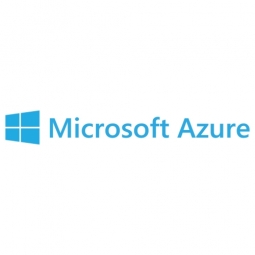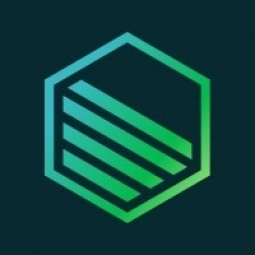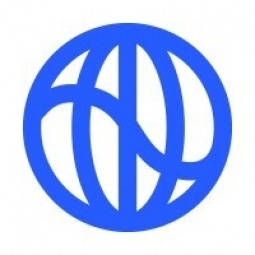Case Studies.
Add Case Study
Our Case Study database tracks 22,657 case studies in the global enterprise technology ecosystem.
Filters allow you to explore case studies quickly and efficiently.
Download Excel
Filters
-
(6,653)
- (2,601)
- (2,127)
- (945)
- View all
-
(5,642)
- (2,469)
- (1,692)
- (826)
- View all
-
(5,571)
- (2,178)
- (1,766)
- (643)
- View all
-
(5,247)
- (2,179)
- (1,715)
- (1,321)
- View all
-
(2,881)
- (1,448)
- (574)
- (376)
- View all
- View all 15 Technologies
- (1,985)
- (1,985)
- (1,915)
- (1,679)
- (1,629)
- View all 42 Industries
- (8,728)
- (4,742)
- (3,618)
- (3,233)
- (2,947)
- View all 13 Functional Areas
- (3,304)
- (2,787)
- (2,603)
- (2,006)
- (1,630)
- View all 129 Use Cases
- (13,581)
- (5,296)
- (4,272)
- (3,520)
- (2,856)
- View all 9 Services
- (504)
- (432)
- (416)
- (382)
- (301)
- View all 1083 Suppliers
Selected Filters

|
Montgomery County Government Uses Azure AI and Zammo.ai for COVID-19 Vaccination Program
Montgomery County Government in Maryland faced a significant challenge during the COVID-19 pandemic as it sought to support the increased demand for services, particularly in managing the COVID-19 vaccination registration process. The county needed an immediate solution to relieve the pressure on its human contact center agents and deliver better engagement and service delivery for its MC311 Customer Service Center and Department of Health and Human Services (HHS). The goal was to offer residents a fast, easy, comprehensive, and equitable COVID-19 vaccination registration process. The challenge was compounded by the need to quickly augment its contact centers with AI capabilities to handle the surge in demand without requiring extensive developer expertise.
|
|
|

|
FortisAlberta Prioritizes Worker Safety on Power Platform, Boosting Productivity and Earning Key Tech Award
With 350 front-line employees working on power lines across the province, injury prevention is an enormous priority for FortisAlberta. Thus, before any work commences at a site, an injury prevention plan (IPP) must be created to identify the risks and hazards staff need to be aware of and the actions they must take to stay safe. This plan must remain dynamic throughout the lifecycle of the project site, as any change to the job could introduce new risks, requiring new plans of action. Before adopting a digital approach, FortisAlberta used a paper-based system to complete and manage IPPs. Supervisors had to fill out paper forms and send them by email to the Safety department within 30 days of project initiation. Recordings of meetings were captured on handheld audio recorders and cross-referenced with the paper forms during random periodic checks or following an incident. To share the IPPs, employees took photos or made photocopies of the completed forms and sent them for site auditing. This made it challenging to pull information together in time to be reviewed at team safety meetings. The paper-based process created several challenges. Handwritten IPPs were not always legible, which made it difficult to record accurate information. The check boxes on the IPP form did not accurately reflect the job’s scope of work, its roles and responsibilities, or its hazards and barriers. The paper forms required double entry, necessitating additional administrative work. And it could take as long as two weeks before forms got to the head office, if they didn’t get lost along the way.
|
|
|

|
San Francisco Municipal Transportation Agency boosts citizen services with Microsoft Azure
The San Francisco Municipal Transportation Agency (SFMTA) faced significant challenges in managing and analyzing the vast amounts of data generated by its operations. The agency's traditional reliance on relational databases and middleware was proving inefficient and resource-intensive. The existing systems required extensive manual processing, such as pulling data from CSV files into Excel for analysis, which was time-consuming and labor-intensive. Additionally, the on-premises infrastructure demanded costly engineering hours for maintenance and upgrades, making it difficult to scale and adapt to the growing data needs. The SFMTA recognized the need for a centralized data management solution that could streamline processes, reduce administrative bottlenecks, and enable data-driven decision-making to improve transportation services and optimize revenue.
|
|
|

|
Jacksonville University Creates a Data-Driven Culture with Power BI
Five years ago, Jacksonville University (JU) faced significant challenges in accessing and utilizing data effectively. The process was cumbersome, requiring leadership to fill out forms and wait for the analytics department to provide static reports. This reactive approach hindered timely decision-making and limited the ability to leverage data for strategic purposes. The arrival of President Tim Cost in 2013, with his extensive experience in Fortune 500 companies, brought a new expectation for technology and data accessibility. The need for a more dynamic and proactive data culture became evident, prompting JU to seek a solution that would democratize data access and empower leaders, faculty, and staff to make informed decisions. The existing data processes were siloed, with different departments owning separate data sets, leading to inconsistencies and inefficiencies. Meetings with deans often resulted in conflicting data interpretations, as each department relied on its own data sources. This lack of a unified and authoritative data set hindered meaningful discussions and strategic planning. The challenge was to create a centralized and accessible data platform that would streamline data access, improve data accuracy, and foster a culture of data-driven decision-making across the university.
|
|
|

|
Sustainable Digital Transformation at Rolls-Royce with Microsoft Azure and AI
Rolls-Royce, a leading British brand in the manufacturing industry, is facing the challenge of transitioning to a net zero carbon future. The company recognizes the need to decarbonize rapidly to ensure its longevity and continue delivering excellence in its engine manufacturing. The challenge is compounded by the vast amount of flight data that needs to be processed and analyzed to optimize carbon output. The existing on-premises infrastructure was insufficient to handle the data volume and processing power required for this task.
|
|
|

|
KFH Accelerates Digital Transformation with Microsoft Teams and Cloud Solutions
Kinleigh Folkard & Hayward (KFH) faced the challenge of modernizing their IT infrastructure while ensuring robust security and mobility. With sensitive information across ten business divisions, the leadership was initially hesitant about cloud adoption. However, by 2018, their on-premises infrastructure was nearing end-of-life, prompting a reevaluation. The COVID-19 pandemic further disrupted their plans, necessitating a rapid pivot to remote work solutions. The need for effective communication and collaboration tools became paramount as lockdowns were announced, pushing KFH to fast-track their digital transformation efforts.
|
|
|

|
Analytics SaaS Provider Scales Instantly, Delivers Faster and More Cost-Efficient Service to Customers
Most businesses generate a lot of data, but that data isn’t valuable for decision making if it’s not structured and analyzed. Analytics aren’t as effective if they are slow and expensive to produce. Inlitix was founded to offer a timely, easy-to-use, affordable BI as a service for small and medium-size businesses. They focused on interoperability across different ERP systems with different datasets and offered out-of-the-box reporting and analytics solutions. However, Inlitix found that it only needed more compute power at certain times, such as when it spins up development and QA environments or when production data is refreshed. It didn’t make sense to pay for a constant high level of compute resources during the times when they weren’t needed. To minimize the company’s compute requirements and maintain affordability, staff would manually adjust and optimize queries, which took time away from focusing on more strategic tasks and adding value to their application. Inlitix wanted to optimize the balance between cost and performance of its databases while ensuring it could quickly process data from customer ERP systems and refresh Power BI reports more frequently.
|
|
|

|
Intesa Sanpaolo Enhances Real Estate Operations and Reduces Carbon Footprint with Azure Solutions
Intesa Sanpaolo Group, Italy's leading banking group, faced the challenge of improving its real estate operations and facility management to cut waste and reduce its environmental footprint. The bank manages thousands of buildings and is one of the largest real estate owners in Italy, with more than 40 million square feet of assets. The challenge was to reduce energy consumption, improve comfort, and optimize operational efficiency across its vast real estate portfolio. The bank needed a solution that would provide real-time visibility into HVAC and other systems in its buildings, enabling data-driven actions to be taken. The complexity of the bank's environment required a robust and secure solution, as data protection is a critical concern for the bank.
|
|
|

|
West Marine's Transformation: Elevating Customer Data Insights with PK and Alteryx
West Marine, the nation's largest retailer of boating and marine supply products, was facing a significant challenge in managing and analyzing their customer data. Despite having 240 stores nationwide, both on the retail and wholesale distribution side, they were heavily reliant on a third-party vendor for data management. This external database was not only costly but also disconnected, providing reports in Excel that did not offer a comprehensive view of the customer journey. The main issue was the inability to cleanse, enrich, and analyze their own customer data, which was hindering their mission to outfit, educate, and inspire anyone interested in the water lifestyle. The company was seeking a solution that would allow them to utilize their own resources, own their customer data, and trust their data with confidence.
|
|
|

|
Revolutionizing Container Supply Chain Processes: A Case Study on GHD and Alteryx
The Port of Melbourne (PoM) in Australia is mandated to track all shipping containers that enter and exit every five years. This data is crucial for ensuring the right infrastructure, industrial land, planning controls, and policy settings are in place to support efficient supply chains. However, the PoM was using over 57 independent groups to track the data in more than 60 different formats. This process was not only time-consuming, requiring hundreds of hours of manual work, but also inefficient, with a forecasting rate below 30%. Furthermore, they were unable to successfully perform a match analysis. The state government in Melbourne, Australia, therefore, contracted the machine learning (ML) team at GHD, a global consulting company, to improve these container supply chain processes.
|
|
|

|
LATAM Private Bank Streamlines Operations and Saves Time with Alteryx
The operations department of one of Latin America's largest banks was facing significant challenges with data processing. Prior to implementing Alteryx, the bank relied heavily on Access and Excel for data processing, which involved a lot of manual labor and was time-consuming. The data received was unstructured, often coming in spreadsheets and text files, leading to inefficiencies and a higher propensity for errors. The bank needed to automate multiple processes across different departments to improve efficiency and the quality of results, thereby eliminating duplicate errors and efforts.
|
|
|

|
Automated Reconciliation Tool for End User Billing: A Case Study
The case study revolves around a business process outsource company that provides an End User Billing platform for insurance companies. The platform interfaces with numerous internal and external data sources, primarily focusing on coverage history and Cash Distribution. The system serves multiple client organizations, each with their own custom business rules, state-specific and federal rules, and variances due to implementation/on-boarding processes. The complexity of data sources, business rules, and manual interventions often leads to discrepancies. The rapid change in data sources and rules/regulations from state and federal regulators further increases risk in new development/enhancements in software. The Billing system generates billing from coverage history, i.e., the record of what coverage you have and the rates and other attributes. Issues arise in the regular updating of coverage history due to late arriving rate changes and other things that affect the elements that drive billing. Further adjustments after the initial bill can be done in error or done incorrectly. Billing operations is regularly challenged to react to discrepancies that are found between coverage history and Cash distribution data.
|
|
|

|
Revolutionizing Natural Disaster Response with IoT
Natural disasters pose a significant challenge to healthcare companies, particularly in terms of timely response and communication with members. A North American payer was grappling with this issue, seeking to improve their response system to better support their members during such crises. The challenge was compounded by the fact that since 1980, the United States has experienced 246 severe weather events, each causing over $1 billion in damages. These disasters affected hundreds of thousands of members, leaving them stranded with limited access to coverage, medication, or medical equipment. The company needed a solution that could deliver timely notifications to members and provide on-site support once they were safe.
|
|
|

|
Lilly's Transformation: Collaborative Engineering with Designer Cloud
Lilly, a global healthcare leader, faced significant challenges in operationalizing data insights on clinical trials and setting up web-based dashboards to track progress. The team needed to accurately monitor, plan, and forecast patient status across all phases of clinical trials. This required understanding how patients were enrolled in trials and tracking their status over time. Lilly had complex manual processes in place using SQL, MS Access, and XLS to integrate 20 different data sets in S3 for a single study. They were manually executing SQL queries eight times a day to update reports and dashboards. However, these processes were siloed, leading to minimal collaboration. The challenge was to streamline and automate data flows downstream to enable business analysts, while controlling costs and efficiencies across all clinical sites.
|
|
|

|
Digital Transformation and Automation of Internal Auditing at Merlin Properties with Alteryx
Merlin Properties, a leading Spanish Real Estate Investment Trust, faced a significant challenge due to the number of assets and the complexity of the data to be processed. The company needed a way to analyze and audit its financial and non-financial information efficiently. The starting point was a dynamic and complex business, with many different technologies coexisting and a large amount of data from multiple sources. The aim was to aggregate external supplier data sources and bring them right up-to-date, in order to have information from all suppliers in real-time. This posed a problem for Merlin Properties on three levels: extracting and processing data, visualizing that data in a more structured and organized way, and carrying out detailed data analysis to help with decision making.
|
|
|

|
Digital Transformation of Analytic Processes at the US Census Bureau
The U.S. Census Bureau, a leading provider of quality data about the economy, has been relying on outdated manual processes and tools for data collection, processing, analysis, and reporting. The Bureau's data is crucial for allocating over $675 billion in federal funding to states, local communities, and businesses. However, the volume, velocity, and veracity of the Bureau's big data have been challenging to manage with legacy systems. Manual surveying and data processing are labor-intensive, time-consuming, and costly. The Bureau was in need of an innovative solution to digitally transform its data collection, analyses, and dissemination processes, particularly for the U.S. Construction Indicator. The goal was to reduce operational costs while improving the accuracy and quality of economic indicators.
|
|
|

|
Predicting and Trading on the Cryptocurrency Markets using Alteryx
Predict Crypto, a project by a student at the University of Colorado Boulder, aimed to predict, trade, and research the cryptocurrency markets. The project required a fully automated solution capable of dynamically pulling the latest data from a database, producing a new set of predictive models daily, and executing real trades on the live cryptocurrency markets every hour. The challenge was to navigate the volatile world of cryptocurrencies and observe patterns within the markets to make medium-term predictions. The goal was to cash in on these trends better than a simple 'HODL' (Hold On for Dear Life) strategy, which involves putting the investment away and forgetting about it for a couple of years.
|
|
|

|
The Russell Family Foundation's Journey to Net-Zero Carbon Emissions
The Russell Family Foundation (TRFF), a philanthropic organization committed to positive community impact, has set an ambitious goal to achieve a net-zero portfolio by 2030. This decision was made in alignment with their commitment to the UN-convened Net-Zero Asset Owner Alliance (NZAOA). Despite having already optimized its portfolio to be approximately 80% more carbon efficient than the MSCI benchmark through divestment from fossil fuels and investment in decarbonization technologies, TRFF recognized the complexity of the path to net zero. The challenge was not only about reaching their own net zero goal but also about setting an example for the broader philanthropic field. To achieve this, TRFF needed a comprehensive baseline of their carbon footprint, including all emission sources across their operations and their investment portfolio.
|
|
|

|
Revamping Health and Safety Processes: A Case Study of AB Agri and Sypol
AB Agri, a rapidly growing agricultural business operating across the entire food supply chain, was facing a significant challenge in managing its Control of Substances Hazardous to Health (COSHH) assessments. The company had been managing COSHH in-house using databases and safety data sheets. However, due to its continued growth and operational expansion, this manual process had resulted in a significant backlog of assessments that needed to be written, putting a strain on the health and safety team’s resources. The approach also meant that COSHH assessments were being written from a single risk view, rather than reflecting the actual work processes taking place across the business. With operations spanning 17 sites across five countries, the team at AB Agri also identified a significant amount of process duplication. Each COSHH assessment took an average of 60 minutes to write, leading to health and safety managers spending a considerable amount of time updating and reviewing existing assessments. It became increasingly difficult to keep control of a dynamic situation that was impacted by changing legislation, product suppliers, and other external factors.
|
|
|

|
E-CO Energi's Transformation with EcoOnline's IoT Solution
E-CO Energi, a Norwegian power company, faced significant challenges in managing and tracking their chemicals in accordance with legal requirements. Prior to implementing EcoOnline's software, the company relied on traditional methods of tracking chemicals using ring binders. This manual process was not only time-consuming but also made it difficult for the company to keep their records up-to-date. The company needed to constantly obtain the latest safety data sheets, which was a daunting task. The lack of a streamlined process for managing chemicals posed a risk to the company's operations and compliance with safety regulations.
|
|
|

|
Streamlining SDS Management with EcoOnline: A Case Study on Ekornes
Ekornes, a large furniture manufacturer with facilities across Norway and the United States, faced significant challenges in managing safety data sheets (SDS) for over 940 chemical products used in their manufacturing processes. The company was using a paper-based system to store SDS, which were scattered across the organization, making it difficult to find the right document and access the latest, updated sheets. This system was not only inefficient but also posed a risk to employee safety as it was challenging to extract necessary information to develop efficient risk assessments and implement controls to reduce potential risks. The paper-based approach was not sustainable for such a large organization and took time away from other key activities. Ekornes recognized the need for a digital solution to streamline their SDS management processes and maintain compliance with the region’s regulations.
|
|
|

|
Digital Transformation of Incident Reporting: A Case Study of Glasgow City Council
Glasgow City Council, the largest local authority in Scotland, was facing challenges with their paper-based methods for managing accidents and incidents across their large estate, which includes schools, care homes, garages, and offices. The traditional system relied on telephone calls or forms, which could take weeks to process and often resulted in loss of crucial information. The council needed a system that would allow immediate notification, especially in the case of serious incidents, and provide intelligence for continuous improvement. The council's primary goals were to identify and respond to a serious incident immediately and collect their incident data in a way that they could monitor trends and make appropriate improvements.
|
|
|

|
Mitie's Transformation: Enhancing Incident Reporting and Reducing Injury Time with EcoOnline
Mitie, a multi-industry company based in the UK, faced several challenges due to the diverse nature of its business. The company needed an Environmental, Health, and Safety (EHS) solution that could cater to the demands of various sectors. Mitie not only had to implement systems and control measures from its perspective but also had to consider the controls and processes of its clients. The existing processes and systems did not support the Quality, Health, Safety, and Environment (QHSE) team in fostering a safety culture within the business. Incidents were managed through a centralized phone line in a linear process, and operation management was more focused on form filling rather than managing QHSE data in source systems. Furthermore, due to a low rate of input, it was challenging to measure Key Performance Indicators (KPIs), and the QHSE team lacked sufficient data to make strategic safety decisions confidently.
|
|
|

|
Porsgrunn Local Authority: A Case Study on Reducing Chemical Use and Greenhouse Gas Emissions
Porsgrunn Municipality, a local authority in Southern Norway, was faced with the challenge of reducing its greenhouse gas emissions and the use of chemicals. The municipality had 4,000 registered chemicals distributed among 44 businesses and 119 departments within healthcare, environment and urban development, education, and administration. The municipality's action program aimed to reduce 10% of chemicals by 2023. The challenge was not only to meet this target but also to ensure the safe use and handling of chemicals. Recent figures from the Norwegian Occupational Safety and Health Administration showed that over 200 Norwegians receive a cancer diagnosis each year from exposure to dangerous chemicals in the workplace. Furthermore, research highlighted that 20% of all lung cancer cases and 10-15% of all asthma cases in adulthood are due to work-related exposure to hazardous substances.
|
|
|

|
Digital Transformation of Incident Reporting at The Prince's Trust
The Prince’s Trust, a leading UK charity for young people, was facing challenges with its in-house safety data systems. The charity, which has thousands of individuals in its care, 1,200 delivery partners and 50 sites around the UK, was relying on paper-based internal processes. This led to work duplication, prolonged working methods, and an inability to review data effectively. The stakeholders often misunderstood their responsibilities, thinking they ended once the paper-based form was completed. The charity also struggled with the quality of data available, which impacted its ability to demonstrate the value of its work to senior stakeholders. The lack of a digital system was hindering the charity's ability to safeguard young people effectively and efficiently.
|
|
|

|
Unilabs' Efficiency Improvement with EcoOnline's Chemical Management Software
Unilabs, a major diagnostic provider in Europe, faced significant challenges in managing their chemical handling processes. Prior to implementing EcoOnline's solution, Unilabs struggled with maintaining up-to-date safety data sheets, conducting risk assessments of the chemicals they used, and obtaining a comprehensive view of their chemical handling. The process was labor-intensive and time-consuming, making it difficult for the company to ensure the safety and efficiency of their operations. The lack of a streamlined process for managing safety data sheets and conducting risk assessments posed a significant challenge for Unilabs, hindering their ability to provide safe and efficient diagnostic services.
|
|
|

|
United Living: Enhancing Safety Culture through IoT
United Living, a UK-based infrastructure, new homes, and property services group, was facing a significant challenge in managing health and safety risks across its operations. The company, which employs over 1,100 people and has a supply chain network of over 2,000 resources, was receiving a mere 250 'close call' reports per month. These reports, which are used to identify potential hazards and risks, were not sufficient for a company of United Living's size and scope. The company's Group Safety, Health, Environment, and Quality (SHEQ) Director, Sean Luchmun, recognized the need for a significant increase in these reports to better manage risks and improve safety across the company's operations. The challenge was to change the company's culture to encourage employees to report close calls and to implement a system that would make reporting easier and more efficient.
|
|
|

|
Ubisoft's Strategic Approach to Climate Contributions
Ubisoft, a leading video game publisher, was faced with the challenge of supporting climate projects in a meaningful and impactful way. The complexity of the carbon market, with its increasing size and variety of projects, traders, and emerging certification standards, posed significant hurdles. The company found it difficult to build a contribution portfolio that was consistent with its climate program. Additionally, there was confusion about how to incorporate these contributions into the company's climate program and align them with corporate values. This confusion could potentially deter the development of a coherent strategy and support for projects that could make a real difference in combating the climate crisis.
|
|
|

|
Kainos's Ambitious Climate Action: A Case Study in IoT and Sustainability
Kainos, a trusted partner for public sector organisations and brands, had initiated a climate action plan driven by employee interest and inquiries from customers and investors. However, they faced several challenges. They lacked visibility into how their carbon footprint was calculated and didn't know which actions would lead to significant reductions quickly. They were also aware that indirect 'Scope 3' emissions from suppliers often accounted for 90% or more of a software company's total emissions, but they didn't know which vendors to focus on. Additionally, they were unsatisfied with merely offsetting emissions and wanted to set an ambitious reduction plan that would keep global temperatures within the +1.5° C safe zone. In 2021, they were asked to provide a full carbon reduction plan with a pathway to net zero emissions in just sixty days, a task that would have been daunting without a clear plan.
|
|
|

|
Klarna's Sustainable Shopping: A Case Study on Carbon-Neutral Operations
Klarna, a leading provider of Buy Now, Pay Later shopping experiences, was faced with the challenge of making their operations more sustainable. With 147 million consumers and 400,000 merchants using their platform, the company had a significant carbon footprint. The challenge was to understand the extent of their carbon emissions and find ways to reduce them. The company needed to measure the carbon emissions from their operations and supply chain, and then take steps to reduce these emissions. They also wanted to align their everyday business decisions with the goal of reducing emissions.
|
|




